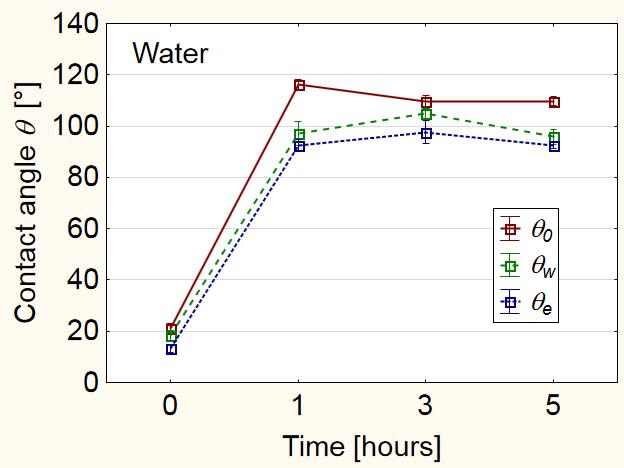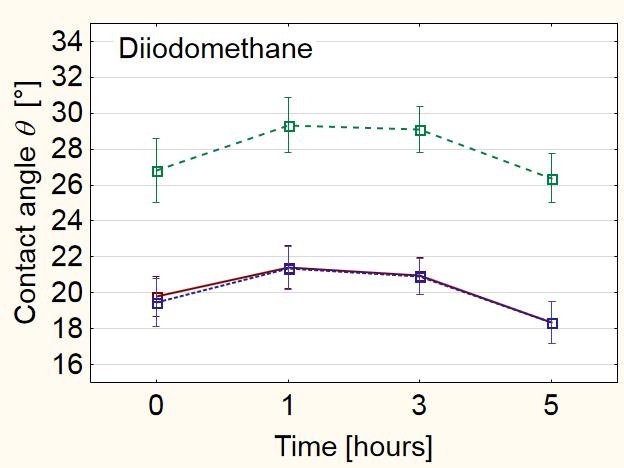
2 minute read
JOZEF MITTERPACH RASTISLAV IGAZ JOZEF ŠTEFKO
Wood surface wetting with water and diiodomethane
The thermal-treatment-induced chemical changes signalised through beech wood surface discolouration as well as the morphological changes on the beech wood surface affected significantly the wood surface´s wetting with standard liquids, primarily water. In all cases, water drop applied on the wood surface was spreading continually over the surface, and, at the same time, soaking into the substrate. The differences in wood wetting performance before and after thermal treatment were mostly detected in the values of contact angles 0, e, w, as well as in the duration of the wetting process up to the complete soaking of the drop into the wood substrate.
Advertisement
The best water-wetting performance was observed in beech wood surface before thermal treatment. Sanding prior the treatment enhances the proportion of polar hydroxyl groups, and, consequently, the wood surface becomes more hydrophilous, in comparison, for example, with a milled surface (LIPTÁKOVÁ et al. 1995, KÚDELA et al. 2016). This fact was reflected in notable drops in contact angle values 0, e and w and in faster spreading over and soaking of the drop into the wood. The average contact angle 0 value at the moment of the application was 21°, the value of the equilibrium contact angle e was somewhat lower (13°). The angle for an ideally smooth surface w had an average value of 15° (Fig. 5). The values of these angles confirm the appropriate wetting of the wood surface before the thermal treatment. The time necessary for the drop to soak completely into the substrate was several seconds.
a) b)

Fig. 5 Duration of beech wood thermal treatment performed at 200 °C, and the resulting contact angle values.
For all three treatment periods, thermal treatment at 200 °C yielded significantly better beech wood resistance against surface wetting with water. This was also evident from the evidently higher values of all three contact angles 0, u and w (Fig. 5). The average values of contact angle 0 ranged between 110°116°, the average values of contact angles e and w were in all cases above 90°. There was also observed more time necessary to reach the equilibrium state at the interface wood – water (te), and the time of duration of the entire wetting process until the complete soaking of the drop into the substrate was multiplied by two orders (Fig. 6). These facts give evidence for the hydrophobic nature of the beech wood surface after thermal treatment. The different wetting capacities were mainly to the heating. In this case, the heating duration was not confirmed as an important factor unequivocally. The thermal treatment also eliminated differences in wetting caused by different mechanic pre-treatments of the wood surface before thermal treatment (milling, grinding).
The beech wood wetting with diiodomethane was different from water. In the first case, the contact angle values of the liquid with thermally modified wood were










